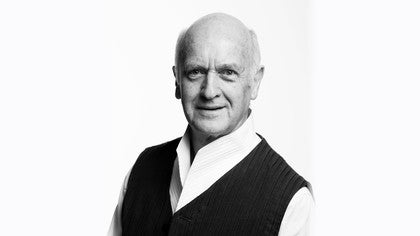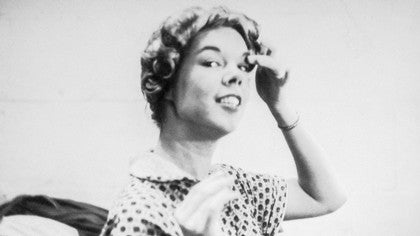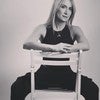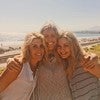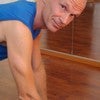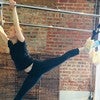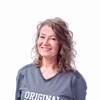Description
Alan studied at the London School of Contemporary Dance and was working as a teacher and dancer in the late 1960s when he was invited to New York to learn about the Joseph Pilates Method. In New York, he worked intensively with Carola Trier and Bob Fitzgerald, two instructors who had been trained by Joseph Pilates himself. Although well-regarded amongst New York's dance fraternity, Joseph Pilates was unknown in the United Kingdom at that time. Alan returned in 1970 to set up his Pilates studio. Among his first clients were actors, dancers, and singers, but word soon spread as doctors and physiotherapists began recommending Pilates to patients struggling with chronic injuries.
At Alan Herdman Pilates, he runs a training course for Pilates instructors. In addition to running his own studios, Alan and his assistants teach in dance schools and designated Pilates studios internationally. Alan also lectures on Pilates around the world, including Balanced Body: Pilates on Tour, and he has written several successful books, including The Pilates Directory (2004), The Gaia Busy Person's Guide to Pilates (2003) and Pilates: Creating the Body You Want (1999). He also is a mentor in Balanced Body's Passing the Torch program.
Alan's first appearance on Pilates Anytime was in May of 2013 and he has contributed many classes, tutorials, and workshops to the site.
About This Video
Transcript
Read Full Transcript
There is life after Pilates, you know. (gasps) (chuckles) And I love doing it and I still love doing it, but it's, I didn't want it to take over my life. Hmm. I meet a lot of people that consider Pilates to be almost a religion. Well, yeah, yeah. And it's not,
it's not. Hmm. It's great. Yeah. It's very worthwhile, but as I say, it is exercise Yeah.
(upbeat ambient music) Alan Herdman is someone who's very comfortable with himself and is very happy and enjoys life. I was born in 1941 on a farm near a small village in Northumberland, which is the north of England near the Scottish border. The farm was on a hill and the farmhouse was at the front of the farm, and so we looked down into the valley where this village corporate was. It was a mixture farm, it was dairy and arable. My father worked very hard, his work ethic I have inherited.
He worked really hard and was very involved in running the farm and not only running it, but working the farm. He's a very kind man, but a very quiet, reserved man. My mother was very quiet, almost unassuming, but she knew what she wanted us to do. She managed to deal with four, quite energetic children by being calm, rather than spending a lot of energy controlling us. My life in Northumberland in the 40s, it was very family-orientated.
There wasn't very much money around. We didn't go without anything, but we didn't have a lot of stuff. I was happy until I was around 10 and 11. It was about that time that I realized that I was different, I wasn't the same as my brothers. I couldn't put a point on it until I was maybe 13, 13, 14.
And I realized that my sexuality was different from theirs. At this time, this was like mid 50s, there was no media help, there was no one to talk to, it was difficult. And I think this made one become very private. You just kept everything to yourself. I seem to remember that my brothers saying that I was soft and that was it, I think they may have been right.
And also by the time I was 14, I was battling with my sexuality, as a 14 year old on a farm in the middle of Northumberland in the early 50s was a whopping big deal. I didn't acknowledge anything until much, much later. It wasn't discussed, but it was known. My mother definitely knew. I just knew she knew, and when she was much older, I had a long-term relationship.
I was close to my mother, I think because I understood what her life was like. I understood what she had given up in the early days of her life, but there was no regrets. She was the only female out of six males. And so if she needed to go shopping or she needed advice, guess who went shopping with her, and I helped her choose clothes, I gave her advice on this and that, so we were very close in that way. Later in life, my brothers, their families, we got on so well, we were able to talk about that time when it was difficult.
So it was a period. First time I went away from home, I went to a boarding school about 30 miles away from farm. The place was called Brown Rigg, and it was pretty basic. I had an amazing English teacher that was into drama and did a lot of school drama. And I think this is what really got my interest going at the beginning.
I discovered I wanted to dance in my late teens. From where we lived, the main city was about 20 miles away, it was Newcastle and they had a main theater in Newcastle. When I was eight, I would go as much as possible to see dance there. And there was a publication in those days called "Dance and Dancers", which I subscribed to. And I had this thing to be a dancer.
In my late teens, I applied to the Rambert School in London to study dance there. And my parents went berserk, they just thought it was ridiculous. But anyway, I went down and auditioned, I think because I, A, I was a male, and B I could stand up, they accepted me on the course. So I went back to my parents and said, well, actually I got in and on a scholarship too. So they said, but how you going to live?
What are you going to do? And I said, well, I'll get a job. You know, then reality set in, I was going to go to this school on a scholarship, having done very little if movement. I was going to have to work almost full time to earn the money to live because my parents didn't have the money to support me. As I say, a reality set in, and I realized this is just not the best way to go to things, so I pulled out of that.
So I did what my parents wanted me to do, and I became an engineer with ICI. I did an apprenticeship for five years and my birthday was on a Thursday, and my apprenticeship ended on the Friday, (laughing) and I was out of there. And I spent two years just fiddling around, I worked for my father on the farm, I did forestry, I cut trees down and I sold furniture at the store. And then I was a member of the local drama group in the village where we had the farm. And one of the guys in the drama group was an ex-guardsman, and he retrained as a teacher.
And he said, why don't you become a teacher? I went to college into the geography department to be a teacher. Hmm. And when I got to the college, they'd open a dance drama department, which I moved over very quickly. This was in the north of England, this was in Northumberland.
The second year we went to London in a field study because Martha Graham was performing. Hmm. So we went down for a week in London. And I absolutely flipped when I saw the Graham Company, and I hoped that this is what I want. Because my training in college was with labrum, which was all sort of expressive type of dance, but I needed something a little more physical.
Mm-hmm. So my plan was to go to London to be a teacher in school for what I was trained in, but also start studying at the London School of Contemporary Dance. And after three years, you know, I'd wanted to be a dancer for years, and after three years of training, I thought my ego was front row of the chorus, my talent was back row. Mm-hmm. So I thought maybe we should think of doing something else, but involved.
Yeah. So I had decided to go move over to theater, so I could merge the two things. And the school suddenly asked me to go into the office and said, we would like you to go to New York to train in this exercise technique. So I said, well, what sort of exercise technique is it and why me? Yeah.
So they said, well, it's very good for dancers, and we feel it's good for the school. And why you, you are experienced as a teacher, you've had dance experience and you're older than the rest of the students. So that worked. So I packed my job in, much to the dismay of my family. Hmm. And went to New York to,
and met Bob Fitzgerald. My first impression of Pilates was how strange. (chuckles) I had no idea what I was getting myself into. I mean, it was a very busy studio and Bob was working with dancers and with regular people. But, you know, I was in the studio like 10, 12 hours a day, just almost like an apprentice.
(tranquil ambient music) He was a very private person. You only got to know what he wanted you to know about everything. I could honestly say my training was not the fullest, considering what I know now, it was a start, it was a platform. I could see the benefit of this work right from the beginning. He had been trained with Corolla, I think he'd taken sessions with Joe and he didn't like anybody.
I mean, the Pilates field was very small in those days. (indistinct) was still alive and she was still on Eighth Avenue. Corolla was on Sixth and Seventh I think it was. Romana was just round the corner. Bob Seed was somewhere close by, but he never mentioned those people, never talked about them at all.
The only thing he ever said to me, he said, there's one person I hate in this world is to Corolla Trier. So I thought to myself, I need to meet this lady, she sounds interesting. (chuckles) Bob Fitzgerald came back with me to help me establish the studio, which was on the top floor of the London School of Contemporary Dance a small room right at the top. Because the equipment was being made in the workshops of the company, when we got back, it hadn't been finished so he had to go back to New York, so I had to stay until the equipment was being made. The drawings of the equipment, the drawings were of Bob's equipment.
And his was based on Corolla's, and Corolla's was based on Joe, so which is very similar to the original stuff. It was a school that suggested maybe we should send you back to have even more exposure. And I said, if I go back, I really want to go and see Corolla Trier, so that I would go over, and if I was there for 10 days, I would be with Corolla every day. It was just seeing a different way of working. She was charming, she could be very hard, but I think she quite liked that I was European and I was quite polite.
I would take class, and she would just being very supportive, very helpful, and I learned a lot in a very short time with her. I'll tell you a lovely story about discipline with Corolla. There was four reformers in a row, and there was three of us on the reformers. And I think there was two people at the end, and there was an empty reformer and I was on this end. And Corolla used to go for a rest.
So she came out of her room, having rested, looked at the studio, and started screaming. And we all went, you know, are the springs all right? Checking ourselves, are my feet in the right place? Where, everybody suddenly went, oh, she's on a warpath. And all it was, she objected to having the empty reformer there.
She said, why should I have to walk past an empty reformer? Move up, so you're all together. (chuckles) So that was her discipline. I don't think she was mean really. She was German.
She knew what she wanted. And I met her a couple of times later on, years later, and she was delightful. Just, I think she was more laid back shall we say. (tranquil ambient music) The efficiency of movement. It gives a freedom and it gives very much a sense of wellbeing.
So whether you're, if you're 60 or more and you can move very easily and feel good, you don't consider your age, you just get on and do things. But my client base in England has been about 95% regular people and 5% of the stars and professionals. And this is the way I like it. It is very safe because again, you're working with the person, you're changing the technique to suit the individual. You're not forcing a physique to do something that it's not capable of doing.
The brief was that I had opened this studio and I would work with the students at the school and with the dancers of the company. So that was my first premise. And with the students, I would work with match work on the exercise mats, with the dancers, we'd work on the apparatus. What I found was that when I got it all set up what, I knew a series of exercises, it wasn't too clear why I was doing them. So I thought I need to branch out a bit and get some ideas.
So I started doing Alexander technique and I did Tai-Chi and I worked with a physiotherapist. With Tai-Chi, it gave me a sense of balance and breadth and calmness. Mm-hmm. I think I would learn from that. And with Alexander technique, it helped me with this elongation posture.
If you've got someone who has the correct posture, a lot of the muscles will take care of themselves. I had no plans to open my own, I just knew that I wanted to spend this time getting to grips with the technique as learning as much as I could before I was ready to open my own studio. After about eight years, I just realized it was time that I went out and started building my own business. One of my favorite things is to help new people who probably haven't done anything with their bodies before, help them to start and understand what we mean by Pilates. In the beginning, one almost has to forget what Pilates is and just work on the individual body.
As a teacher, you look and see what they need, and then create a class to suit that. Quite often, you get a body that can't move very well. They don't know where their pelvis is, they don't know where their back is so it's this slow process of gradually introducing them to what it's all about. The main thing is not to frighten them away. After my eight years (tranquil ambient music) that when I decided I really need to look, I looked around property and I found a church hall in the center of London.
It was a big empty hall, it needed painting. And Julian and Michael were students in the school at the London School of Contemporary Dance. And I suggested to them, if they wanted a part-time job just to make some money, they could come and paint my studio. So Michael and Julian helped to paint the studio. When we got it up and running, because I had taught them in the school during the time there, they came, they worked in the studio and both Julian and Michael talked for me as well.
Julian went off to New York to dance, which you know, but Michael had certain injuries. He wasn't going to be dancing. So in fact, he started working for me full time. In fact, he looked after the studio when I was teaching at the Houston Ballet, he would run the studio for me while I was away. And I tell the story, one Tuesday the morning when I was teaching and there was a woman on the reformer and she was doing her work and really very well and complimenting and teaching her, and she got up and stood up straight, and she says, (tranquil ambient music) not bad for 90.
(chuckles) 90? And she'd done short spinal, she'd done this and she'd done that. Wow. And you see that, if it wasn't for Pilates. Hmm. If it wasn't
for the exercise. Right. She wouldn't be able to do that. Right. So, I mean, this is what keeps me going because.
It's 50 years exactly, no, it's 51 years in January when I opened it up, those 50 years have not been static. So I've done a lot of workshops with people, I've taught a lot of workshops. What I found is my main teachers have been my clients. You'll get a client and they come in, you know, they're introduced to the technique and they tell you their physical background and you think, what am I going to do with this? This is not going to be, get out on the reformer, do the foot work, but do this, do this, we're going to have to create something to get this person from where she is now to a stage where they can enjoy the technique.
And that's when I started developing pre-Pilates, doing a series of exercises to gently move them forward to be able to appreciate what the technique can do for you. And even now, you know, I'll get a new client, and then I'll say, well, here we go. This needs another slightly different approach. And that's it. When you're fulfilled professionally, makes one enjoy ones personal life as much.
I leave the studio feeling very satisfied and I approach the rest of my day on a high. Well, I always go back to the time with my family is I think that strong sense of family makes a difference to me. And I think that works on both levels, that works on both professionally and personally. My philosophy has always been client first, technique second. I want to exercise a client for what they need, not what the technique demands from them.
And I don't believe in changing the technique for the sake of changing. (chuckles) It's not (indistinct) actually. I change it to make sure the individual can get the most out of what their body is capable of doing. As long as you adhere to the principles, it gives you freedom to deal with different body types. I want people just to say, he helped me.
If that's the legacy, I want to be known as someone who helped people. You've heard people say, oh, I remember Alan Herdman, he really helped me when I was having trouble with so-and-so or I had a very bad back, and he helped me. This is what I want to be remembered for. What's the 100 for? I ask people, and they say, well, it's for the breathing.
Mm-hmm. And I said, okay, would you stand up and curve your upper torso forward and pump your arms (chuckles) and breathe? I said, well, I can't, I said, well. Hmm. My question's answered.
And the pumping of the arms is for energy they tell me. Hmm, oh, okay. To do the energy I think. There are different ways of doing it when you're just moving from your shoulders, which in fact, most people pump with this going up here. Yeah, yeah.
Okay, so how do you do the a 100? I don't do it. You don't do the 100? Very rarely. Pause. (laughing)
(upbeat ambient music)
Pilates Legacy Project: Biographies
Comments
 OX
OXYou need to be a subscriber to post a comment.
Please Log In or Create an Account to start your free trial.
